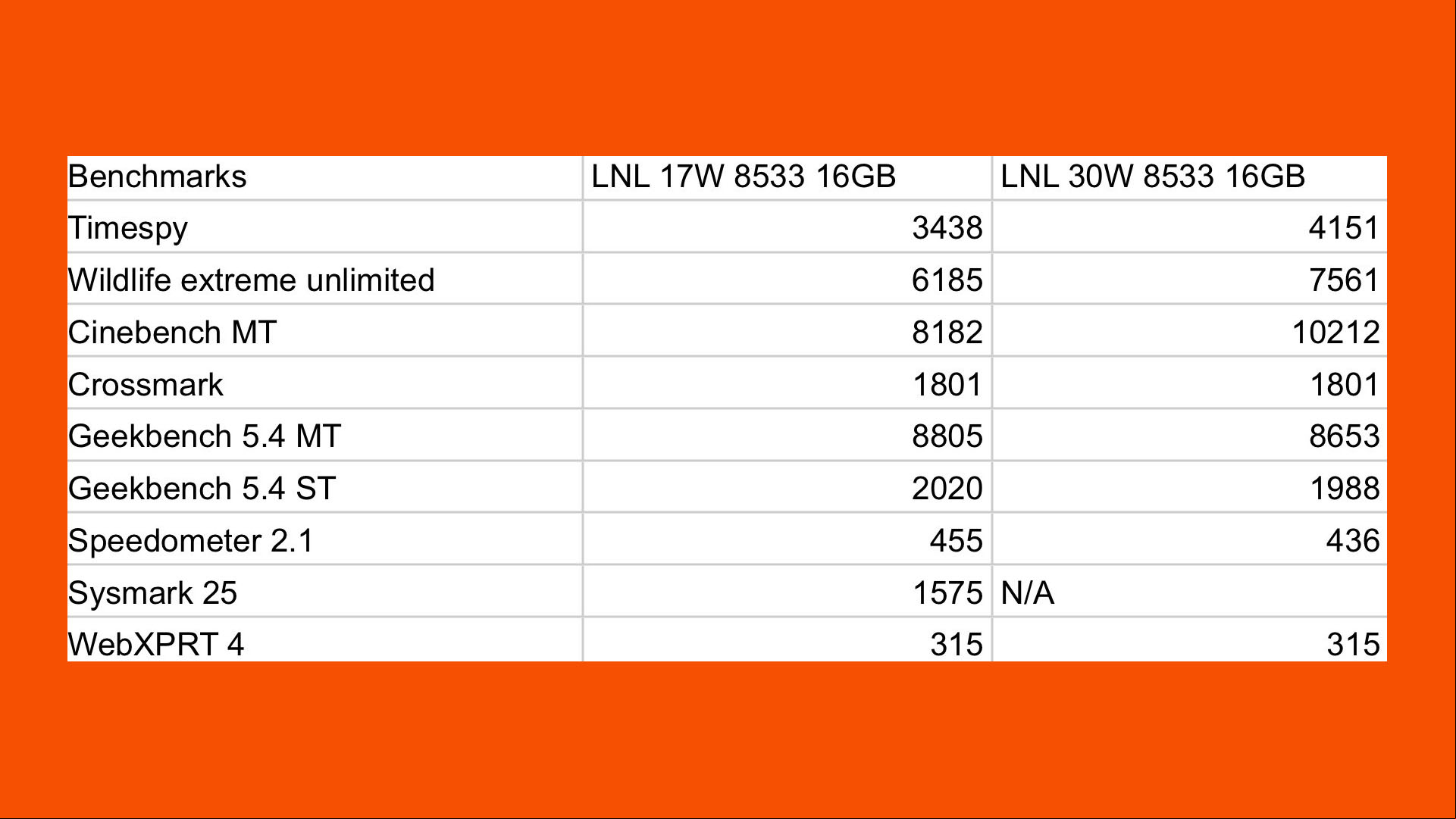Benchmarks of Intel's Core Ultra 200V laptop Us have been leaked, and show that the new chips can deliver impressive gaming performance while drawing a tiny amount of power. The Intel Core Ultra 200V benchmark leak suggests Intel could be putting up quite a strong fight against competition from AMD and Qualcomm when its new Us arrive later this year.
It's an exciting time for laptops – both gaming and otherwise – with the second half of this year set to see new devices based on three brand new chips battle it out for Intel Lunar Lake.
All three chips are primarily aimed at the thin and light laptop market but also include very capable in-built GPUs that can be used to play games. It's just this portion of the new Intel Core Ultra 200V chips that has apparently been tested in a new leak, which comes from X/Twitter leaker Jaykihn.

The data purportedly shows a Lunar Lake U running in both 17W mode and 30W mode, and running a range of benchmarks including 3DMark Timespy, Cinebench's multi-threaded test, and Geekbench 5.4. Several of these tests are interesting, but it's the Timespy data that's most interesting to us, as it shows Lunar Lake delivering 3,438 points in 15W mode and 4,151 points in its 30W configuration.
Those figures compare to AMD's current AMD Hawk Point mobile chips, which score up to 3,517 points when running in 35W mode. Meanwhile, another leak from X/Twitter @9550pro shows data for AMD's Strix Point chips in the same test. In this leak, the AMD chip running in 15W mode apparently achieves "~3500" points while in 54W mode it only hits "~4000" points.

All told, then, this leak suggests that Intel's new Us could in fact outperform AMD's ones when it comes to peak GPU performance. However, at lower power settings – essentially with the U running at lower clock speeds – the AMD chip delivers similar performance for slightly lower power usage.
However, we can't draw overly strong conclusions yet for several reasons. Firstly, this is only a leak so none of these numbers have been confirmed by either AMD or Intel. Also, these tests are likely on engineering samples that could differ slightly from retail products.
Thirdly, we've seen with Intel's Arc desktop graphics cards that, while its products are reasonably powerful, the company's driver and game is still iffy – despite regular updates. So while Intel's new chips could perform brilliantly in some games, if they prove as inconsistent as the likes of the Intel Arc A770, they may not be the safest bet for reliable mobile gaming.
That's all in stark contrast to AMD's recent mobile gaming efforts, with the explosion of handheld gaming PCs started by the Steam Deck. While they've had their issues, the likes of the MSI Claw did not deliver consistent performance.
Whatever happens, though, the tail end of this year is going to bring a wealth of mobile gaming options, and more choice is always good for us. In the meantime, check out our guide to the best handheld gaming PC if you're thinking of getting one of these systems for gaming on the move.
